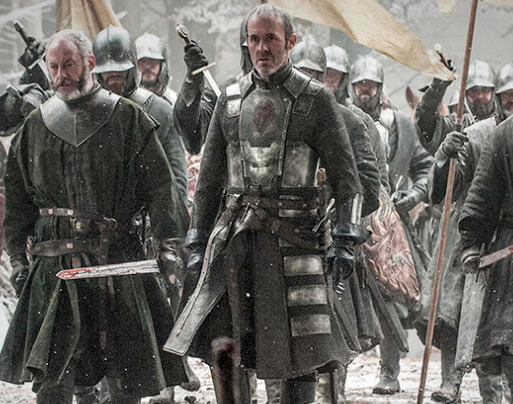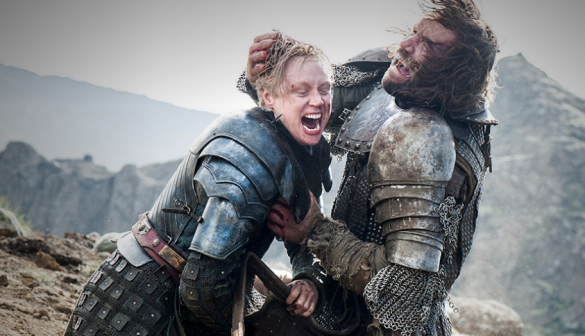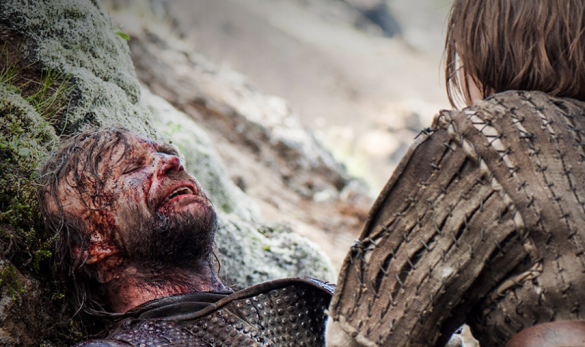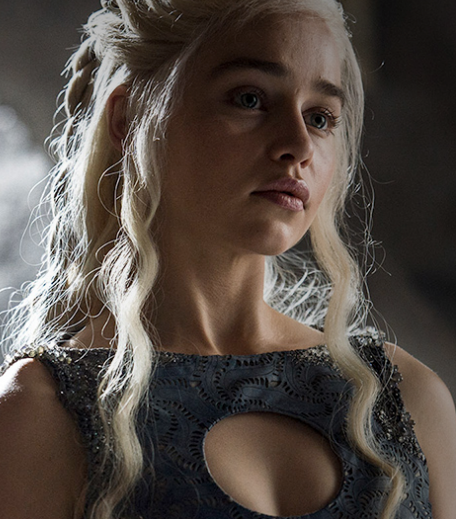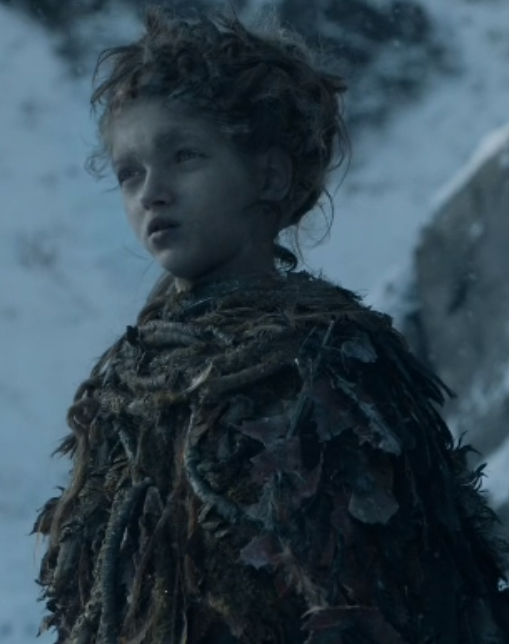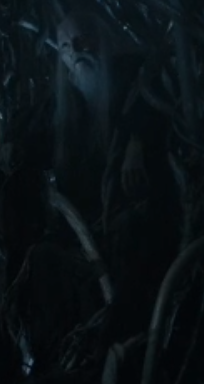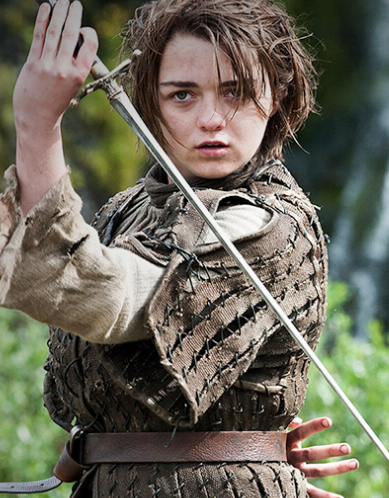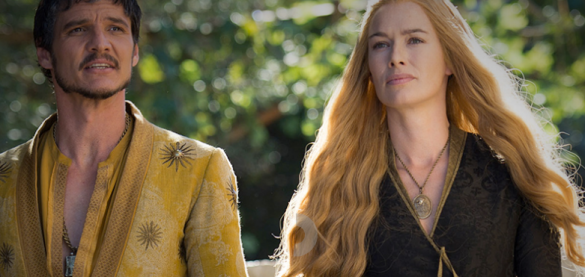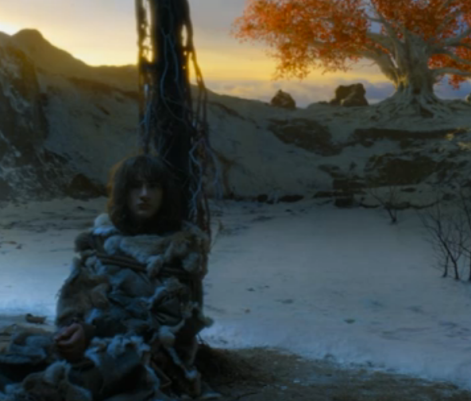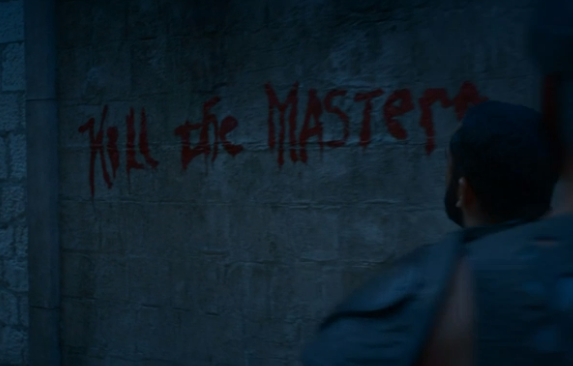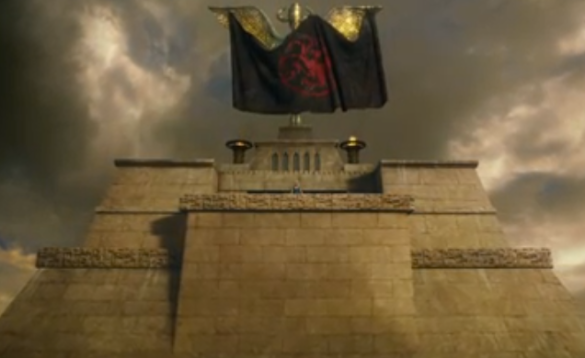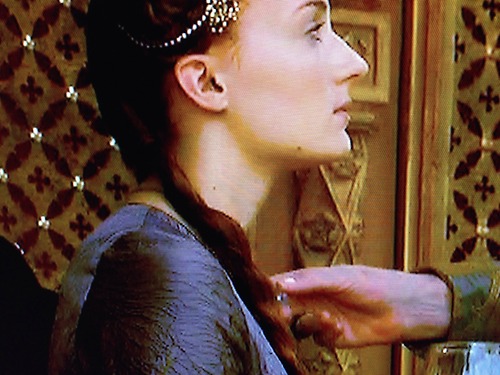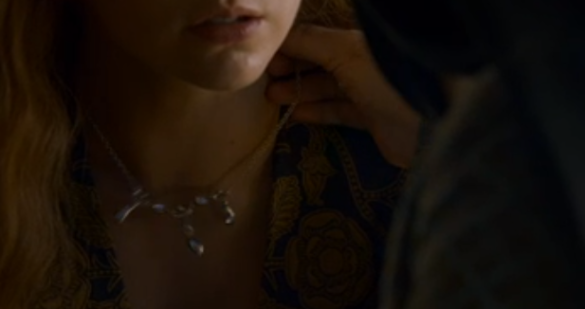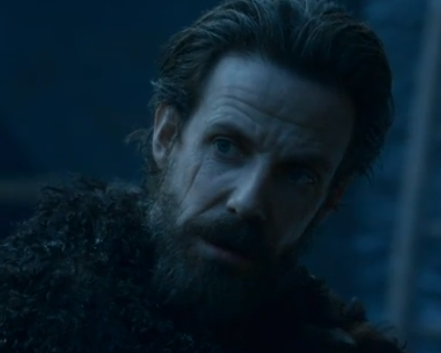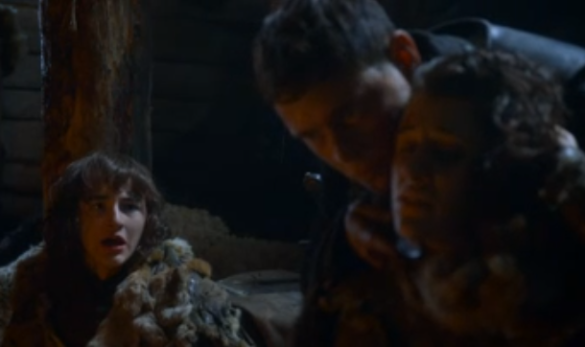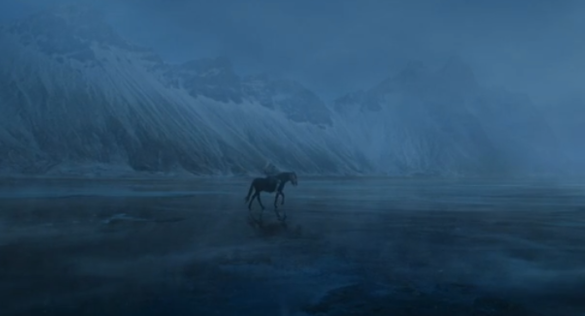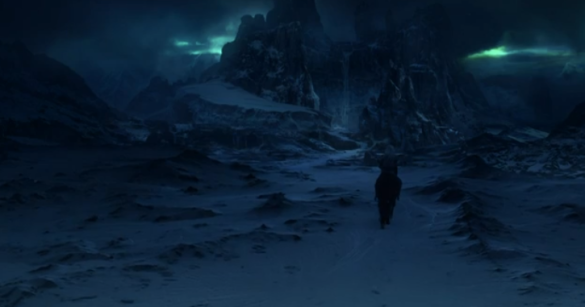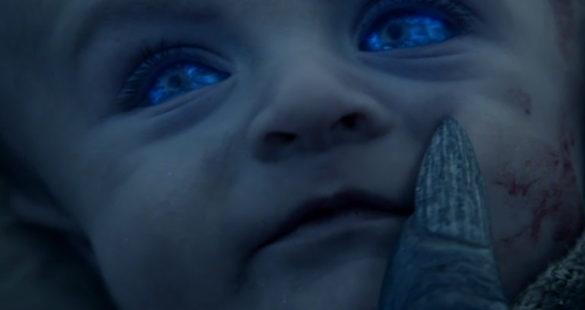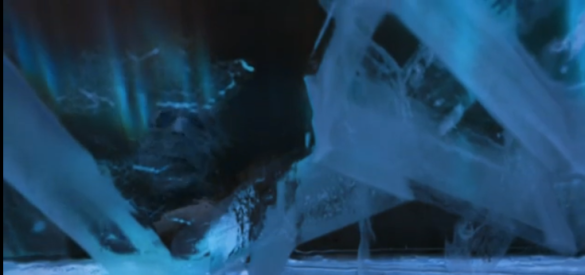Disclaimer: There are no spoilers in this article. I have only read the first three books and I have no knowledge of what transpires in the show moving forward. Any views or content expressed are solely personal theories, opinions and insights.
If season five ended here and now, I could wait until next season, fully satisfied with what I’ve gotten from this season thus far. More accurately, I would be fully content with what I got from the fifth episode, entitled The Door.
There were a number of reasons that I started this blog a few years back, but the number one reason was my fascination with the Thrones world that took place long before the time in history at which the show starts. The books touched upon so much of this rich history, which dates back over 12,000 years, and includes incredibly fascinating backstories of things such as the First Men to inhabit Westeros, the Children of the Forest whom they encountered, the founding of the Night’s Watch, and so much more (to learn more about this history, refer to this timeline I created which offers context of just how far the history of this world goes). I wanted to create a blog that offered viewers a bit more insight into this incredible history, which ultimately adds context to the show we are watching today, making it more enjoyable and hopefully, more meaningful. As much as I enjoy the story that is unfolding in present day, I have always been much more fascinated with questions about things that happened thousands of years ago, way before any of what we are seeing today. For that reason, I’ve really enjoyed Bran’s flashbacks as they’ve offered a window into significant events that predate the story we are watching today. But most of his flashbacks have been to relatively recent events that have occurred within the past 20-30 years. That all changed with this episode, as Bran flashes back more than 8,000 years ago to witness the creation of the very first White Walker. Yes, you heard that right — eight thousand years ago to witness the first White Walker being created. My mind was blown, and as far as Thrones is concerned, I could die a happy man. But there was a hell of a lot more that we found out in this episode, so let’s get into it.
SANSA & BAELISH
At the Wall, Sansa receives a raven from Littlefinger and she travels to Mole’s Town to meet him. But things are quite different from the last time they were together. Sansa is no longer the vulnerable and naive child who foolishly put her trust in Baelish to keep her safe. She is now a woman that is all too aware to the evils of the world, thanks to Ramsay, whom she was given to by Baelish. As she confronts Baelish, Sansa forces him to recognize the things that Ramsay has done to her — things that she can still feel today — not just in her heart — but things she can still physically feel. Sansa forces Baelish to guess the things Ramsay has done to her — in a way, forcing him to acknowledge and own the terrible things that he is responsible for her. At minimum, Baelish is terribly uncomfortable, not only by the position Sansa has put him in, but also in the fact that for once, he no longer has the manipulative upper hand in the situation he finds himself. Even more, Baelish may actually feel bad about what has happened to Sansa, and perhaps he truly did not know what Ramsay was capable of — but we never really know where the line between truth and lies starts and ends with each word that comes out of Baelish’s mouth, which is of course the genius of his character as a whole.
In any event, it was satisfying to see Sansa’s strength in forcing Baelish to acknowledge what he had done, and also that Sansa no longer has any illusions about who Baelish really is (even though we, as viewers, are still trying to figure that one out). Before he departs, he drops one pretty sizable bomb — Brynden Tully aka Blackfish, is not only alive, but has raised an army to retake the Tully stronghold of Riverrun. Last we saw Blackfish was in the third season, during the infamous Red Wedding episode. Just before the doors of the wedding hall were locked shut and the Red Wedding massacre began, Blackfish stepped outside to use the bathroom. We never saw what happened to him, but clearly he escaped and has been able to raise an army to retake Riverrun. Well, at least according to Littlefinger.
If true, this is a huge reveal, as it presents another ally that can join the Sansa/Jon Snow alliance in their quest to retake Winterfell. And even though we never got to see too much of him from the show, Blackfish is a pretty badass character, so it would be great to see him back in action. Sansa decides to send Brienne to seek him out, fearing that a raven could be intercepted by Ramsay. Meanwhile, Jon Snow has proposed trying to win the support of the 10-12 other smaller houses of the North, who Sansa believes will support their cause. After all, the North remembers. (One interesting tidbit to note is that one of these smaller northern houses that Jon Snow named was House Mormont. Perhaps the timing will work such as that Jorah returns back to Westeros to find his cure, just in time to unite with the Starks).
THE FACELESS MEN
Arya continues her training to join the ranks of the Faceless Men, but she is still questioned and told that she is not one of them. In another juicy historical reference, Jaqen tells Arya that the Faceless Men date back many thousands of years ago and that they came from the mines of Old Valyria (the same place dragons were discovered). After fleeing Valyria, the Faceless Men founded Braavos, and much like the elusive nature of the Faceless Men, Braavos was a hidden city, completely disguised from the rest of the world, until it revealed itself only a few hundred years ago.
Jaqen tasks Arya, or better yet a girl with no name, with killing a woman that serves as an actress in a local play. When Arya goes to scout her target, she stumbles upon a reinterpretation of the death of Robert Baratheon, the rise of King Joffrey and the beheading of Ned Stark. Whereas she was forced to look away when Ned was actually beheaded, this time she was forced to face it head-on (no pun intended). No doubt, this was a test of who she really is, and if she is truly just a girl with no name, then watching this should not have bothered her. She is able to get past what she sees without much emotion, and decides that she will execute her victim by poisoning her rum. Yet still, she notes to Jaqen that she seemed like a decent woman and asks questions about who wants her killed. Jaqen tells her that servants do not ask questions and that the price has already been paid — raising a separate set of questions about what that price was and who paid it.
THE FIRST WHITE WALKER
No big deal, Bran flashes back 8,000 years ago to see the Children of the Forest huddled around an ancient weirwood tree. But that’s not all he sees. A man is tied up to the tree, and one of the Children inserts what appears to be dragon-glass into his chest, taking his life and creating the very first White Walker. Since day one, if any of you are like me, you’ve been wondering how the hell these White Walkers came to be in the first place, and what exactly they are. And just like that, we got an answer — and a completely amazing answer at that. The fact that the Children of the Forest created the White Walkers is totally twisted and ironic and amazing all at the same time.

As a quick refresher, the Children of the Forest were a magical humanoid species that lived peacefully on Westeros, namely in the forests from which they derived their magic and power. About 12,000 years ago, the First Men traveled from Easteros to Westeros, becoming the first humans to inhabit Westeros. For 2,000 years, they warred with the Children of the Forest, destroying their forests and nearly pushing them to the brink of extinction. Eventually, the Pact was signed, which brought thousands of years of peace and prosperity between the Children and the First Men. But before this would happen, in an effort to save their species, the Children used their magic to create the first White Walker. Presumably, the White Walkers were used by the Children to fight back the First Men, and at some point, things went terribly wrong and the White Walkers became their own evil order.
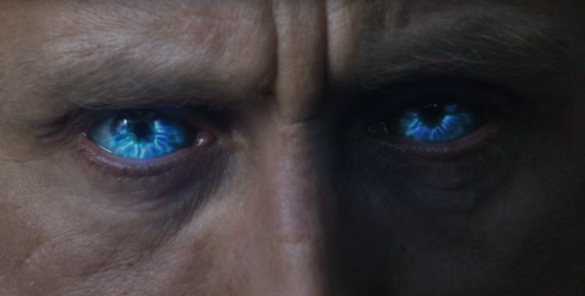
It is ironic to consider that the Children of the Forest created the first White Walker to fight off man, only for the man to eventually band with the Children to fight off the White Walkers (most notably, during the Long Night, when the White Walkers nearly pushed all life to extinction). That aside, it was just amazing to get to see the creation of the very first White Walker, who we assume to the Night King that we see today. That the Children used dragon-glass to kill the human and create the White Walker would also explain their present-day vulnerability to dragon-glass. As Thrones so often does, this reveleation also forces us to reconsider our previous notions about the Night King, whom we perceived to be the embodiment of pure and absolute evil. However, after this scene, we actually realize that the Night King was in fact once a human, and in this scene, even appeared to be an innocent one. There is always more than meets the eye, and the Night King very well may have once been a good and just human. Separately, it was also interesting to see that the tree the Children used to kill the man and create the first White Walker, is the very same tree where the White Walkers and their army are camped presently, which we see in Bran’s second vision. And the spiral rocks we see at the tree of the Children, is a similar pattern that we saw used by the White Walkers in season three (photos further in this post).
THE IRON ISLANDS
We often forget that the Iron Islands are one of the Seven Kingdoms, and undoubtedly will have an important role to play in what is to come, but we were reminded of this tonight. A Kingsmoot is taking place, which is their semi-democratic process by which a new king is selected to lead the Iron Islands. Yara declares herself to be the first queen of the Iron Islands, and when it is pointed out that Theon would be the rightful heir over Yara, he steps up and delivers a passionate speech about why Yara would be the best leader. Notice that his hair is short again, his beard gone, and he is back in the armor of the Iron Islands — in short, pretty much all signs of Reek appear to be gone.

Before Yara can be selected, Euron, Balon’s brother and their uncle, steps forward to declare himself king. Even more, he openly admits to killing Balon, and justifies it by noting that Balon was leading them nowhere at all. He tells the Islanders that he’s sailed all around the world and knows what’s out there. His campaign platform is to sail to Easteros, join up with Khaleesi, and offer her the strong fleet of ships that she has desperately needed to arrive to Westeros. Not a bad plan, kind of makes sense (minus the part about him fucking her, she probably won’t be down with that part). And like that, the Islanders are won over, and Euron receives the Iron Island version of a baptism as a ritual ceremony to officially become king.
While this is going on, Theon and Yara flee the scene along with some of their best men, and steal a handful of the best ships. It’s good thing they did, because Euron’s first words when he regains consciousness are to kill Theon and Yara. But, they’re long gone and Euron demands that all of the Iron Islands get to work to build 1,000 ships. It will be interesting to see where Theon and Yara are headed, and also whether or not Euron will follow through in his attempt to provide Khaleesi with the fleet of ships she has been waiting for. One other item worth noting is that the priest on the Iron Islands with the long grey hair who oversees the Kingsmoot — that’s Aeron Greyjoy — the other brother of Balon and Euron, and also uncle to Theon and Yara. In the books, he plays a central role in determining who the next king will be. In the show, they’ve all but cut him out, and most viewers probably do not even realize that he is also a Greyjoy.
JORAH AND KHALEESI
Across the sea, Jorah stands before Khaleesi, who notes that she has exiled him twice, yet both times he returned to save her. She cannot keep him, but she also cannot command that he leaves. But he will make her decision easier, as he reveals his greyscale and tells her that he will be leaving her for good. But not before finally confessing his love for her. Khaleesi shows great emotion, and commands him to find a cure for his disease, so that he can return to her side and help her rule over Westeros. It was a powerful moment, and a reminder that Jorah has been by her side since the beginning (even if as a spy for a short while). It will be interesting to see the journey that Jorah is taken on in an effort to find a cure. Recalling back to last season, Stannis told a story about his daughter Shireen, who also had greyscale, and noted that he had every doctor and maestar from across the world brought in to treat her. Finally, they were able to prevent the spreading of the disease which kept her alive. So, we do know that there is some sort of cure out there.

THE HIGH RED PRIESTESS
In Mereen, Tyrion proposes that they must find a way to spread the news that it is Khaleesi who is responsible for creating peace in the lands. They turn to the High Red Priestess, who proclaims that it is in fact Khaleesi who was the one that was born from the flames to save the world from darkness, so naturally she is willing to help. While Tyrion is glad to hear this, Varys is a bit more skeptical. He points out that another Red Priestess, Melisandre, had proclaimed that it was Stannis who was the savior. And though he doesn’t know it yet, as viewers, we know that Melisandre is now putting her faith in Jon Snow as the Prince That was Promised. So this kind of muddies the waters in terms of trying to figure out who the Prince That was Promised really is. The Red Priestess responds to Varys by telling him that there is still much that he does not know, and recalls the story of his mutilation, referencing a voice that spoke words as his parts were thrown into the fire. Varys face is taken by fear and wants no more part in this conversation, leaving us to wonder what those words were. Either way, at a time when some of us might have been doubting, the Lord of Light’s power and knowledge reemerges.

HOLD THE DOOR…
Bran embarks upon another vision, this one taking him to the very same place as his previous vision, though this one takes place in modern day, whereas his first was thousands of years ago. The below photos reveal some very interesting tidbits. First, the tree that Bran visited where he saw the Children create the Night King (first photo below), appears to be the very same tree that Bran visits in his second vision when he sees the White Walkers (second photo below). Of course, in the second photo, it’s thousands of years later and winter has made the whole landscape cold and icy. But it’s interesting to consider that thousands of years later, the Night King holds his army of the dead at the very location where he himself was turned from a human to a White Walker by the Children. Going a step further, the third photo below shows a scene from season three, where Jon Snow and the Night’s Watch stumble upon a whole bunch of dead and mutilated horses in the deep north, left by the White Walkers. You will notice that the spiral pattern follows the spiral pattern found in the first two photos, which was a pattern created by the Children and used in their magical rituals. So, in some way, the Night King and his White Walkers are still referencing the Children, which created the White Walkers in the first place.

Aerial view of of Bran’s first flashback to the tree where the Children of the Forest created the first White Walker

Aerial view of Bran’s second flashback. Thousands of years later, we see the White Walkers’s basecamp is the same location as where the Children created the first White Walker
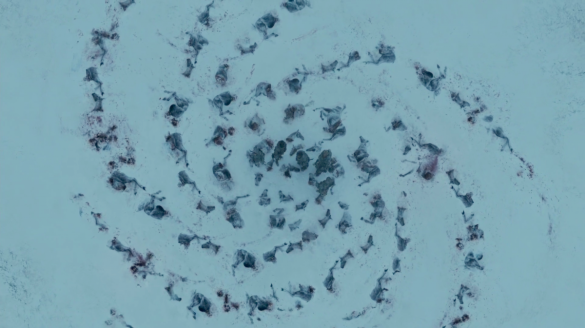
Dead horses left by the White Walkers in a spiral configuration that matches the spiral of the Children
As Bran journeys through the sea of wights, he arrives at the Night King and a few White Walkers. To his surprise, the Night King is able to see him, and eventually touches him. As he regains consciousness, we see the mark on his arm, showing that what happens in his visions can have very real effects on his present-day life. The Three Eyed Raven tells him that the Night King can now find him, and that they must leave right away. But before they can pack up shop and get out of dodge, the Night King and his army are at the door of the cave and moving in quickly. The Children dispatch their firebombs and eventually set a ring of fire around the entrance, a very literal depiction of the battle between Ice and Fire that has already begun. Meera runs back to get Bran, but he’s in another vision, this time back at Winterfell, looking at his grandfather, father and uncle, with Wylis (aka Hodor) in the background. All hell is breaking loose underneath the tree, as Meera, the Children and Summer (Bran’s wolf) try to fight off the wights. They fend off the first few, and Meera even kills a White Walker, which was pretty awesome. Sadly, Summer dies, leaving just Ghost and Nymeria (wolves of Jon Snow and Arya, even though we haven’t seen Arya’s in many seasons) as the only Stark wolves still alive. The death of Summer has both literal and metaphorical meaning; literal in the sense that Bran’s wolf Summer actually dies, and a deeper metaphorical significance in showing that summer really is over. No longer can we say winter is coming… Winter is here.
Meera runs back to get Bran, but he’s in another vision, this time back at Winterfell, looking at his grandfather, father and uncle, with Wylis (aka Hodor) in the background. All hell is breaking loose underneath the tree, as Meera, the Children and Summer (Bran’s wolf) try to fight off the wights. They fend off the first few, and Meera even kills a White Walker, which was pretty awesome. Sadly, Summer dies, leaving just Ghost and Nymeria (wolves of Jon Snow and Arya, even though we haven’t seen Arya’s in many seasons) as the only Stark wolves still alive. The death of Summer has both literal and metaphorical meaning; literal in the sense that Bran’s wolf Summer actually dies, and a deeper metaphorical significance in showing that summer really is over. No longer can we say winter is coming… Winter is here.
Hodor needs to help get Bran out of there, but is in one of his Hodor freak-outs, perhaps sensing his imminent death. Meera shakes Bran and shouts for him to wake up, and Bran begins to hear Meera’s voice, even though he is in a totally different time and place. He hears her tell him to warg into Hodor, and he does so, taking over Hodor’s body and helping to drag Bran’s body down a long tunnel leading to an exit. What is significant to note is that Bran was now occupying several consciousnesses; not only was he himself in his vision, but at the same time, he was also controlling Hodor’s consciousness — something we’ve never seen before.
Meanwhile, the Night King finds the Three Eyed Raven, and strikes him down, but not before the Three Eyed Raven tells Bran that it is time for Bran to become him. And just like that, the Three Eyed Raven that had been waiting thousands of years and watching Bran all his life, is now gone, adding even more pressure to what Bran must become. And as if all of this wasn’t enough — the flashbacks to the Children of the Forest, seeing the creation of the first White Walker, Bran seeing the White Walkers in his vision etc etc, the show takes us for one more final, but tragically sad turn, as we learn how Hodor became Hodor.
As they escape the cave and Meera drags Bran’s body as quickly as she can, she shouts over and over “hold the door!” to Hodor. At the same time, although actually many decades earlier, young Hodor appears to see Bran in his vision, and can also clearly hear Meera shouting “hold the door,”even though this event would not in fact take place for another 30-40 years. But the damage was done. Thanks to Bran, Wylis was experiencing his own future death, and a terrible death at that. He falls into a seizure, shouting “hold the door” over and over again, as his consciousness goes into present day Hodor to experience his own death as he is ripped to shreds by an army of the dead. What we then realize is that Hodor has been experiencing his own death ever since that moment, affecting him so greatly that he’s only ever been able to say “Hodor,” a variation of the words that would change him forever — “hold the door.” All at once, we learn the cause of Hodor’s condition, watch his excruciatingly painful death and realize the sad fact that Bran was responsible for both.

There were a few very key takeaways from this part of the story. First, there is a massive amount of pressure on Bran’s shoulders at this point. At the end of last season, Jojen Green (Meera’s brother) died to keep Bran alive. In this episode alone, Children of the Forest and the Three Eyed Raven, all of whom were thousands of years old, give their lives for Bran. Not to mention, Bran’s wolf, Summer dies to protect him, as does Hodor. Whatever role he is to play in the impending war can be nothing less than huge, after all the people that have died in recognizing the importance of keeping him alive. Speaking of which, let’s recall that in the finale episode two season ago, the Three Eyed Raven told Bran that he will never again walk, but he will fly. With Hodor, Bran’s primary source of transportation, now gone, we have to wonder how Bran will get around, and if he’ll start to use his warg abilities in a greater way.
The other thing I found amazing, albeit in a sad way, is how George R.R. Martin, through incredibly powerful storytelling, was able to make us feel deep emotion for a character we’ve otherwise probably never felt anything at all. After all, Hodor was the goofy oaf who literally spoke only one word — “Hodor.” There was no depth to his character, no real emotion and overall not much for us as viewers to really connect to. If there was one character on the show that you could cast off without thinking twice about, it probably would’ve been him — he just didn’t really offer much — he was just Hodor.
But in the course of just three minutes, that all completely changed, as we abruptly learn the cause of Hodor’s condition in the past, while also watching him die in the present…all at the same time. And that was the beauty of it — the fact that we watched present day Hodor dying at the very same time he was experiencing his own future death as a kid. We now understood that Hodor had been bearing a tremendous weight his entire life — knowing that he would eventually die, being ripped to shreds by the wights. But, we only learn this as we actually watch his death come to fruition, making this sad realization so much more impactful. That one word — Hodor — all of a sudden took on such meaning, as we realize each time he says Hodor, he is referencing the event in which his life will come to an end. The (sad) beauty about how George R.R. Martin chose to reveal this was by delivering that revelation at the same time as his death, forcing viewers to take it all in at once, making it such a tragic death. Poor Hodor, RIP.

